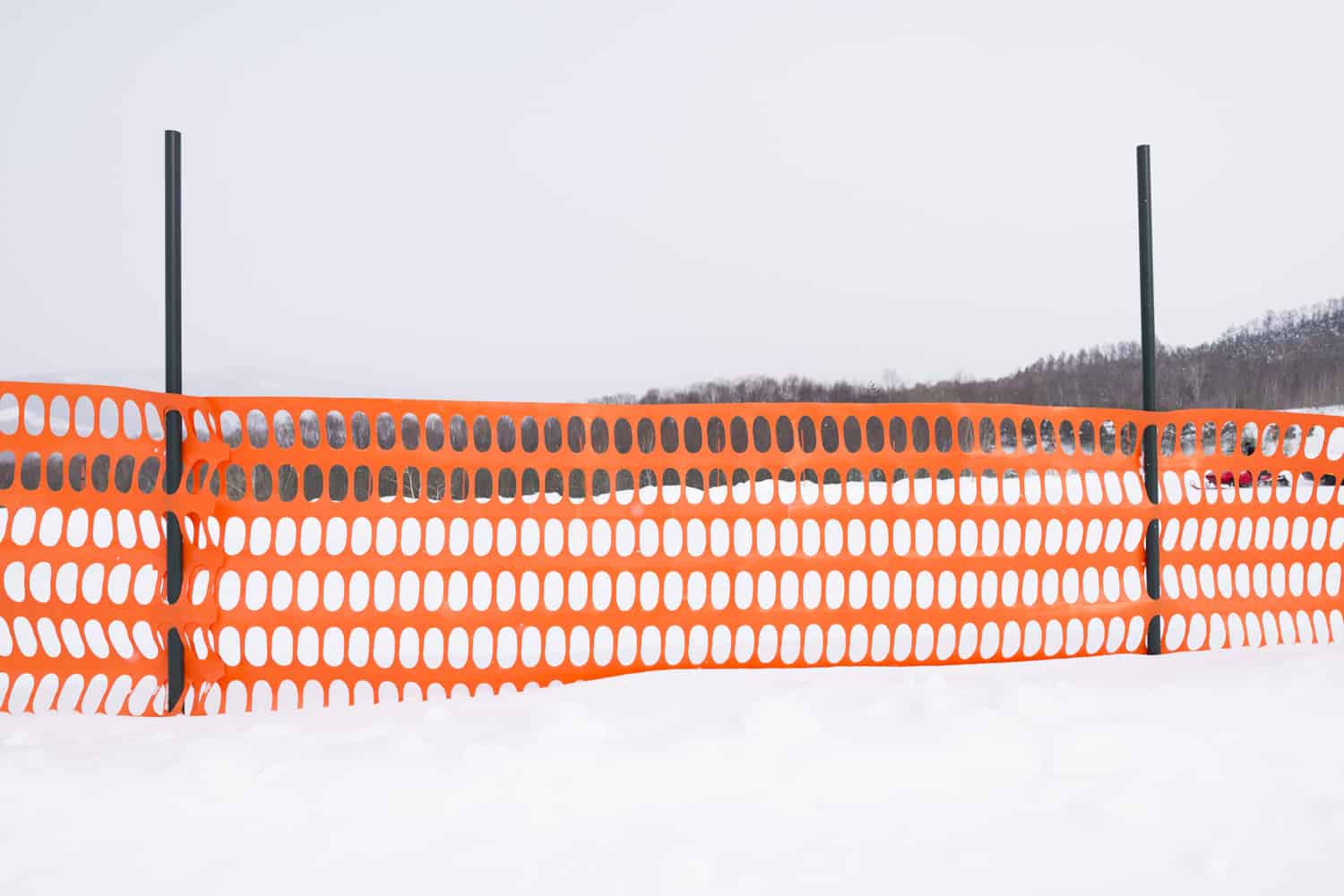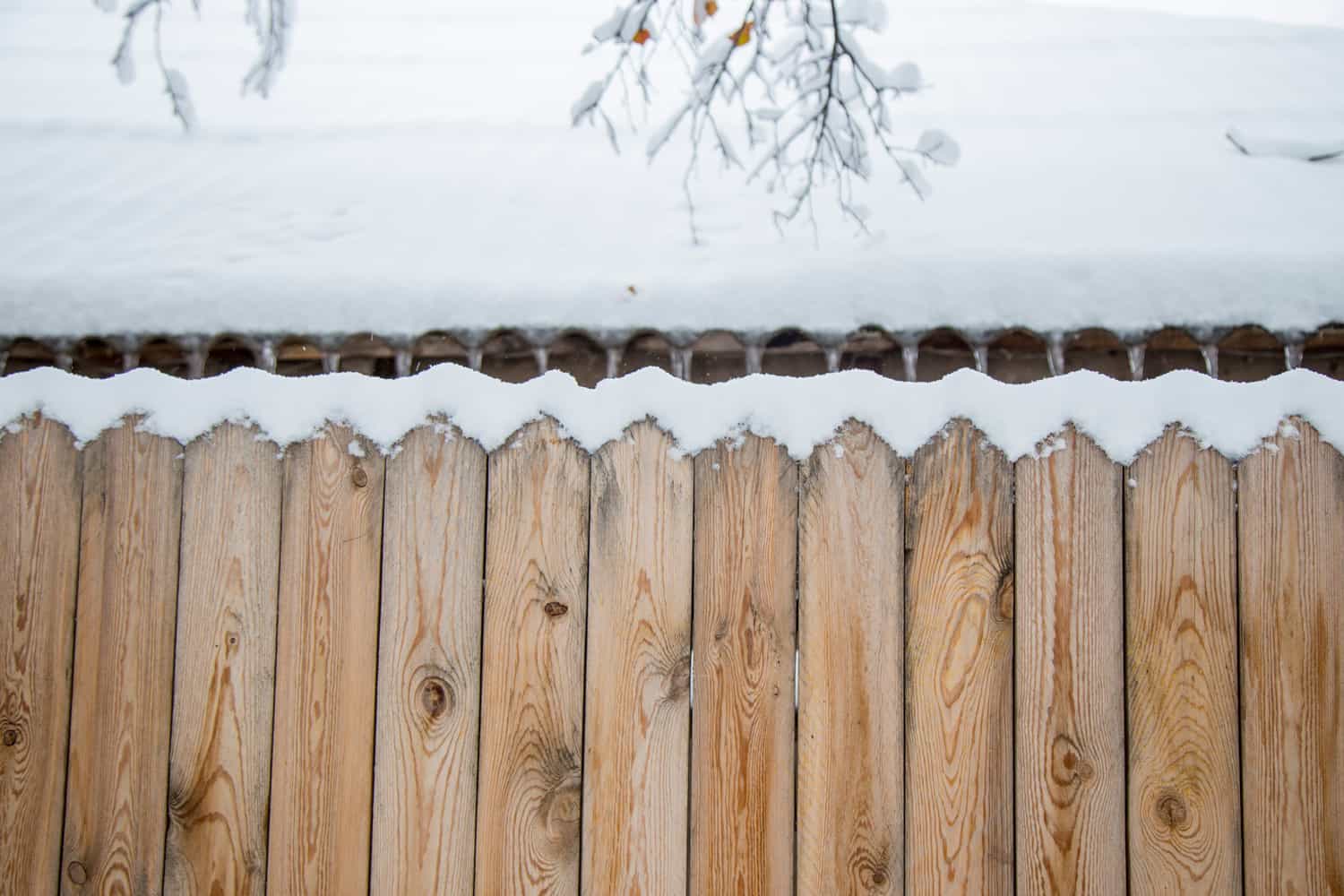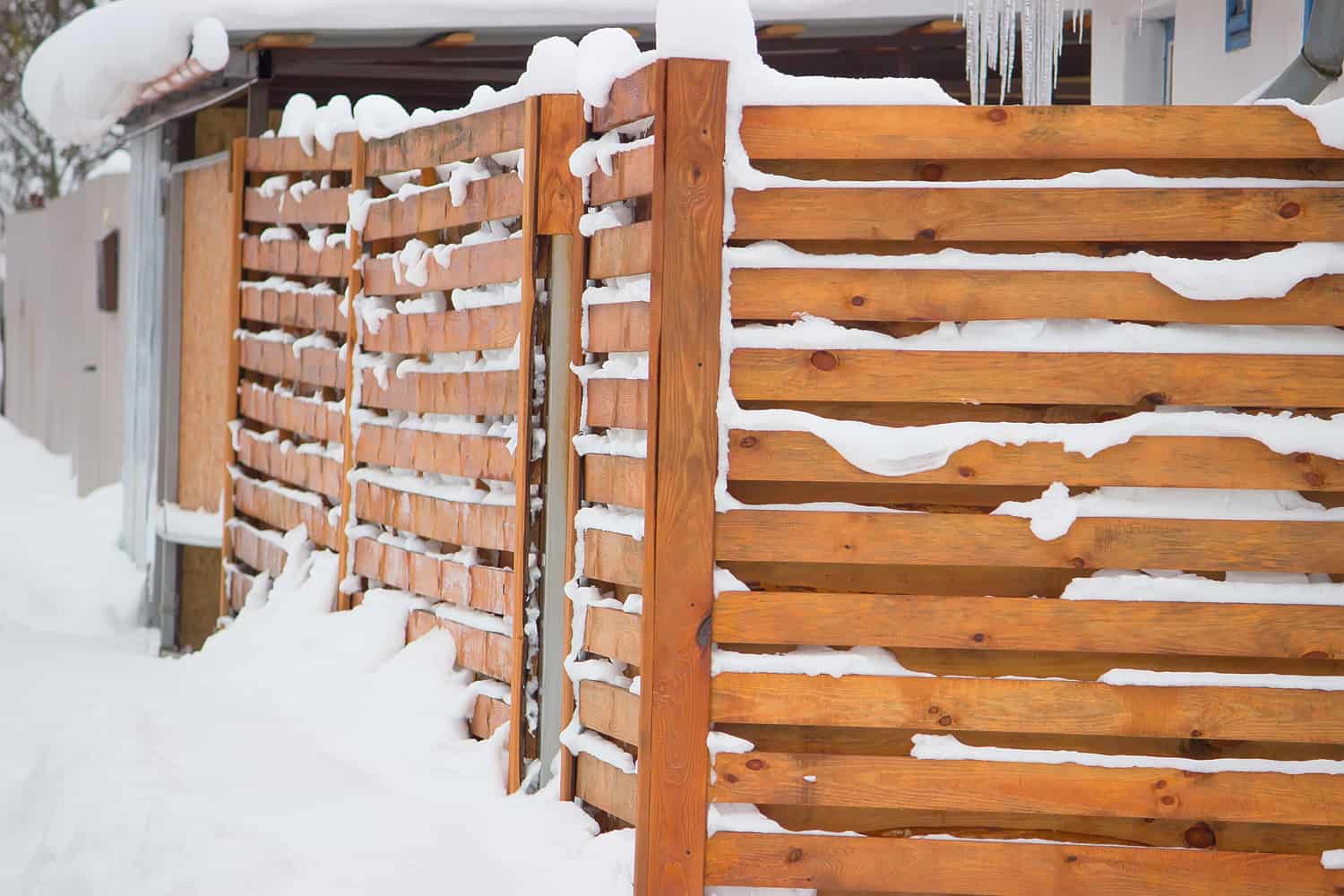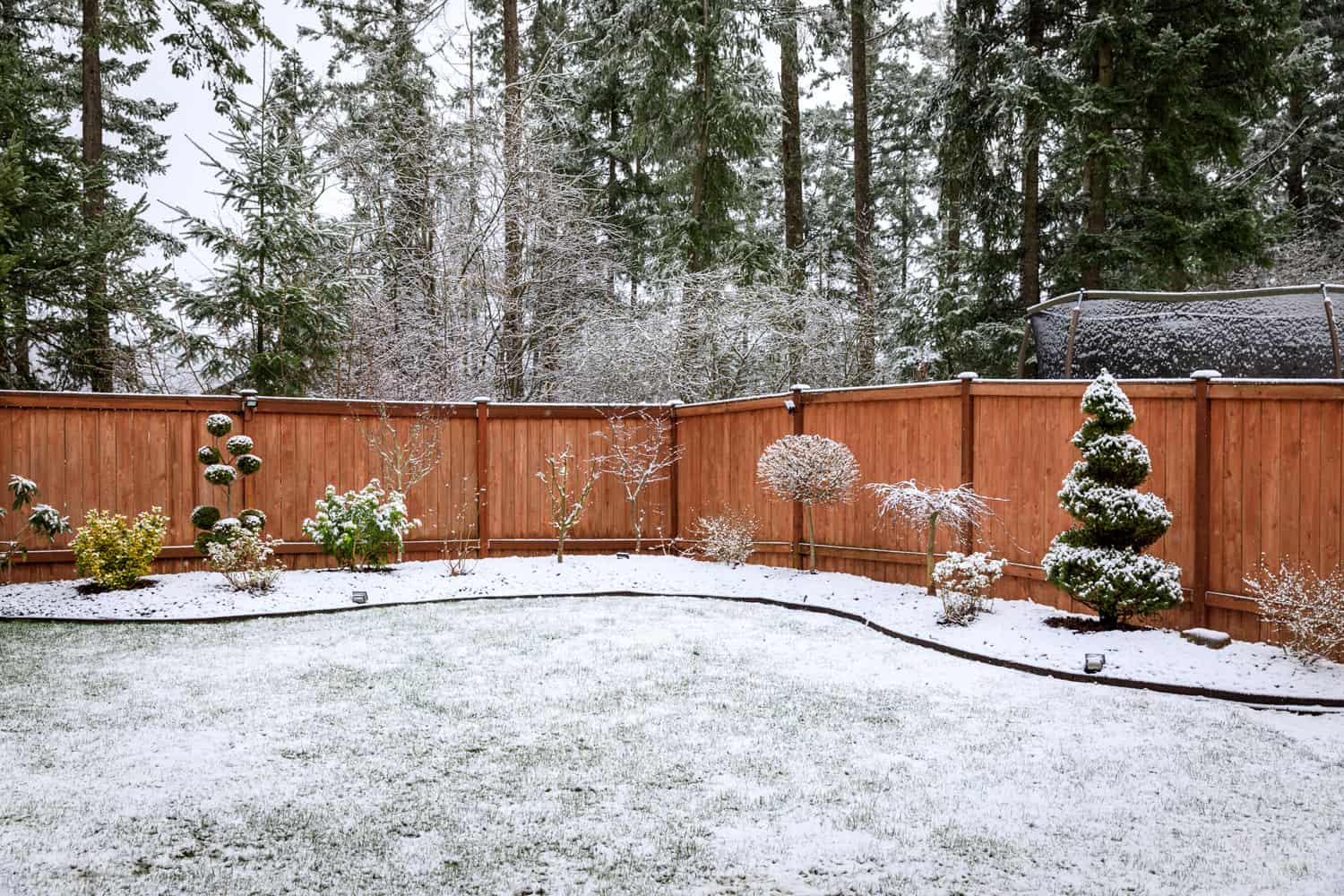A snow fence generally acts like a dam. But instead of blocking water, it becomes a shield to force windblown snow to gather in one place. But does it really work? If so, what is the proper way to install a snow fence? We researched the answer to these questions and here’s what we found.
Snow fences typically work, as long as installers practice proper setup procedures. For instance, the fencing should be taut. Otherwise, a sagging fence may still allow a significant amount of snow to invade sections of the property. Also, take note of the following installation procedures for plastic and wood snow fences:
Plastic Snow Fence Installation
- Set the primary fence post and bury about one-third of its height into the ground.
- Repeat the previous step to the other posts.
- Secure one end of the rollup plastic fence at the starting post.
- Unroll the plastic material while securing it to each post.
- Stabilize the fencing at the last post with support wires.
Wooden Snow Fence Installation
- Install post flanges to mark the locations of each fence post.
- Use a fence driver to pound each post into their flanges.
- Unroll the wooden fence and lean it on the posts.
- Wrap each major section of the fence to the posts with support wires.
Setting up a snow fence might look easy at first glance. But mistakes can still happen, which can reduce the reliability of the structure in winter. Continue reading as we talk about these installation procedures in greater detail.
![wooden fence in the snow at white background - Does Snow Fence Really Work? [With Proper Installation Tips]](https://fencefixation.com/wp-content/uploads/2022/04/wooden-fence-in-the-snow-at-white-background-Does-Snow-Fence-Really-Work-With-Proper-Installation-Tips-800x1200.png)
What Is Snow Fence Used For?
Snow fences help control snowfall at the desired place. These structures make it more convenient than usual to remove snow from properties.
Interested buyers may purchase snow fences made of different materials. Some relatively common materials used in producing these products are wood, plastic, and metal. Take note that these options have their unique pros and cons.
For instance, wood snow fences are usually more durable than their plastic counterparts. In comparison, plastic snow fences are often easier to install than wooden options.
Check out this plastic snow fence on Amazon.
How Strong Is Snow Fence?
A snow fence can be an effective tool in preventing snow from falling into certain areas of the property. However, the efficacy of a particular snow fence differs depending on certain factors. Aside from the fence’s primary material, other factors that can affect a snow fence’s ability to regulate snowfall are:
- The location of the installation.
- Amount of snow falling on the property.
- The direction of the fence.
- The existence (or lack thereof) of gaps under the fence.
Controlling snowfall with the help of a snow fence can improve with the help of other solutions. One example would be to elevate the driveway near the fence’s placement. A 1- to 2-foot elevation should suffice in preventing excess windblown snow from landing on that surface.
How Do You Install A Plastic Snow Fence?

It can be ideal to measure the location of the plastic snow fence installation before proceeding with this task. Doing so can help installers save effort and time in cutting fencing material, which would otherwise be present if they don’t measure the area beforehand.
Also, it’s important to pay attention to the local climate. Places like Anchorage, Alaska, and Flagstaff, Arizona, usually encounter more snowfall than other cities. If so, it might be best to set up additional snow fencing to prevent mounds of snow from invading certain areas of properties.
Don’t forget to determine the direction in which the snow falls into the property. Study the wind direction of the area to verify the origin of the snow that can fall into the lot. That way, snow fencing installers can use the correct fence orientation to allow the structure to provide the most benefits.
After taking note of those considerations, here are the general steps to install a plastic snow fence properly:
What You’ll Need
- Plastic snow fence kit
- Fence posts
- Support wires
- Fence ties
Step-by-Step Guide
- Start by setting one fence post and make sure that about one-third of its height is under the ground.
- Place the other fence posts while making sure each unit isn’t more than 8 feet from the previous pole.
- Tie one end of the rollup plastic snow fence.
- Unroll the snow fence and secure it to each post. Make sure that the fence doesn’t sag.
- Stabilize the fencing upon reaching the end post using the support wires.
Check out these fence hook ties on Amazon.
Keep in mind that some limitations or restrictions may hinder an easy snow fencing installation. For example, rocks and uneven soil can make the assembly uneven. So the installer should remove these issues first before setting up the fence.
How Do You Install A Wooden Snow Fence?

A wood snow fence will generally require similar preparatory procedures when compared to the installation of plastic snow fencing. That idea exists in spite of both fencing materials using slightly different installation processes.
What You’ll Need
- Post flanges
- Fence driver
- Support wires
- Wooden snow fence
Step-by-Step Guide
- Install the post flanges to act as support for the posts.
- Pound the posts into the flanges using the fence driver.
- Unroll the snow fence along the ground while staying relatively near the posts.
- Allow the wooden fence to lean on the posts.
- Wrap the support wires around the starting post and the fence’s origin point.
- Tightly pull the snow fence and secure it to each post with support wires.
Check out this fence post driver on Amazon.
Remember to only put up the fence on the owned property. Don't install any structure owned by another property owner. Expensive fines might be in store for those who break building and property laws.
Watch the video below to see a visual guide on how to do complete the steps mentioned above:
Where Is The Best Place To Put A Snow Fence?

The ideal location to put a snow fence often depends on particular factors, such as:
- Snowfall: Amount of snow that typically falls in a locale.
- Snow transport: Average wind speeds during winter. The stronger the wind, the higher the chance it can send significant amounts of snow into a property.
- Wind direction: The route in which wind may transport snow.
Keep in mind that snow fencing should act as a shield to prevent the organic material from piling up in particular areas of the property. Taking note of the things mentioned above should help installers place their snow fences in the correct locations with the proper orientations.
How Far Should Snow Fence Be From Driveway?
It's preferable to have the snow fence installed at least 80 feet away from the driveway. Property owners should try to isolate their snow fencing at about 120 feet from that surface to experience optimal results.
How To Maintain A Winter Fence?

Remember, the efficacy of snow fencing may only be optimal with proper care and maintenance. Some ways to ensure a snow fence does its job well throughout winter are:
- Remove overhanging tree branches that might otherwise pound against the fence during strong winter winds.
- Rake leaves around the fence as these objects can become nesting places for animals.
- Don’t attach things that will otherwise weigh down the fence.
- Repair the fencing upon detecting damages.
Final Words
Snow fences work provided that installers practice correct setup procedures. Proper preparation can also prevent issues with these structures when winter arrives. It’s also important not to place these fences in unowned properties, which would otherwise result in breaking certain laws.




![A modern middle class home with its backyard being enclosed for privacy by a new, modern style white vinyl fence. Green grass, and blue sky is in the background., Can Vinyl Fencing Withstand Wind? [Plus 7 Windproofing Tips!]](https://fencefixation.com/wp-content/uploads/2022/06/A-modern-middle-class-home-with-its-backyard-being-enclosed-for-privacy-by-a-new-modern-style-white-vinyl-fence.-Green-grass-and-blue-sky-is-in-the-background-600x400.jpg)
![A white vinyl fence running across a yard on spring day with blue sky and trees in the background, Can Vinyl Fence Touch The Ground? [Plus Tips On How To Close The Gap]](https://fencefixation.com/wp-content/uploads/2022/06/A-white-vinyl-fence-running-across-a-yard-on-spring-day-with-blue-sky-and-trees-in-the-background-600x400.jpg)
![A grass meadow and a small fence next to a small pond, How Long Does Split Rail Fence Last? [And How To Prolong Its Life]](https://fencefixation.com/wp-content/uploads/2022/06/A-grass-meadow-and-a-small-fence-next-to-a-small-pond-600x400.jpg)